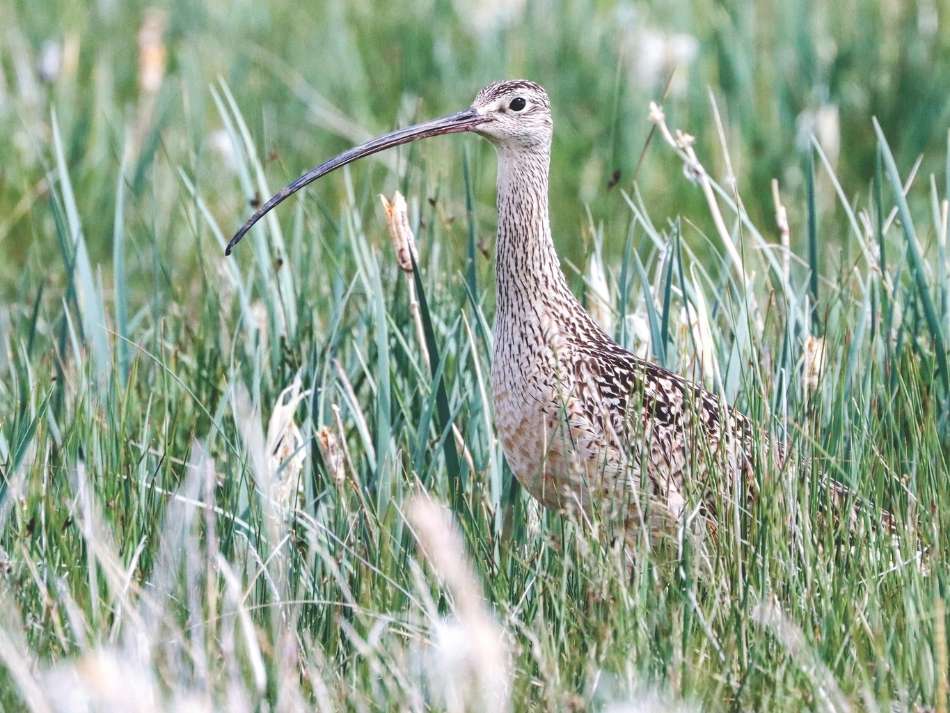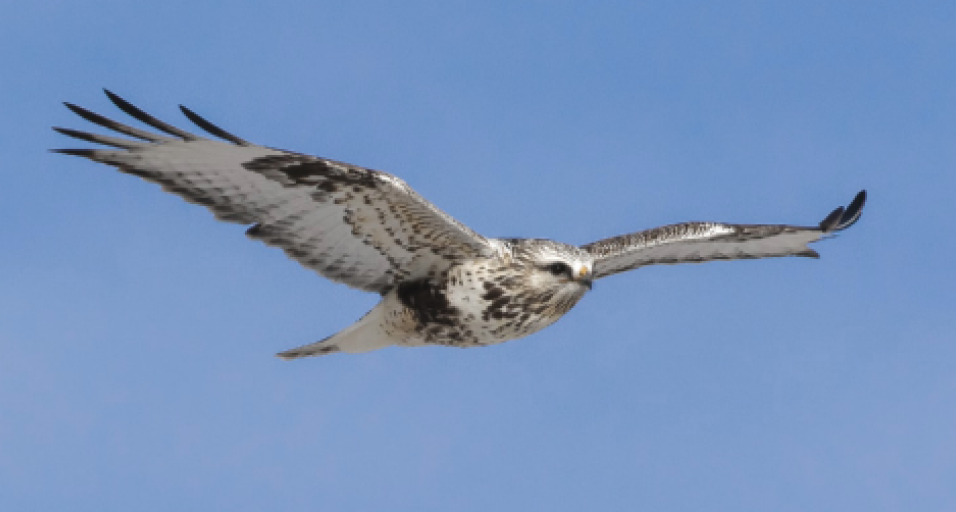Just as there are many kinds of birds, there also are many kinds of migrations. The need for migration is based mostly on food and not necessarily cold temperatures, with the added need for space and locations for nests and nesting. The long days of summer and higher latitudes of Wyoming allow birds to forage longer and grow rapidly. Some birds, such as mountain chickadees, are permanent residents in Wyoming since they can find what they need year-round and have other adaptations for the winter. Western meadowlarks may move only as far as needed. They may end up in the lower-elevation parts of Wyoming, such as Laramie or Goshen counties, or move further south into Colorado or other surrounding states and return in March. Many birds that depend on insects for food are long-distance migrants, and depending on the species can be as far south as South America in the winter and as far north as the North Slope of Alaska for breeding and rearing of young. The yellow warbler, one of the most common warblers in Wyoming in the summer, is one of these long-distance travelers. Most migrations are north and south, but the harlequin duck migrates east and west between the Pacific coast in winter and high-mountain streams of northwest Wyoming to breed. Some birds have adapted to human development and changed their migration patterns. The classic scene of a large V of Canada geese flying south in the fall has been altered somewhat by the number of reservoirs, agricultural fields, golf courses and other open areas people have built and provided that supply them enough food unless the winter gets really tough. Around Cheyenne, there are several thousand Canada geese most winters, which may be mostly residents, with variable numbers of similar, but smaller, cackling geese joining them that have migrated from their breeding grounds further north. Artificial feeding by humans through bird and hummingbird feeders often provides welcome places to refuel and rest, but, with a few exceptions, doesn’t stop birds from eventually completing their migration. A few species do an altitudinal migration where they breed in the mountains and move to lower elevations for the winter. Townsend’s solitaires and brown creepers do this. The three species of rosy finches form roving bands that can be at high, low and in-between elevations depending on need. Dusky grouse sometimes go higher in the winter where conifer needles are a staple food. Not all migrating species leave the state for winter. Rough-legged hawks and American tree sparrows look at Wyoming like it’s Miami Beach for the winter, and come south in the fall to be here. Just as bird species are different, the manner in which they migrate also differs. One generality is that spring migration is more of a concentrated event as the rush to breed and raise young during the summer is paramount, while fall migration is more leisurely and spread out. A few examples help to illustrate how different migrations can be. Rufous hummingbirds winter in central Mexico and go through a giant clockwise migration. They first go up the Pacific coast, with some going all the way to Alaska. They start showing up in northwest Wyoming in late June and take advantage of the high-elevation flowers and insects of the Rocky Mountains throughout the summer. Many smaller bird species take different routes seasonally, which appears to take advantage of tailwinds in the spring and weaker headwinds in the fall.

The Intermountain Bird Observatory studied long-billed curlews from 2014-22. Satellite transmitters were placed on adult curlews captured at breeding sites in western and eastern Wyoming. There were several interesting migration observations from this study. Most Wyoming curlews wintered in the northern parts of Mexico with a couple of locations in California, and arrived on their breeding grounds in early to mid-April. The “fall” migration for adults might start as early as mid to late-June if their nests failed. For those that successfully raised chicks, the return migration would be about a month later. Females tended to migrate first, then the males and juveniles last. All adult curlews left Wyoming by the end of July. The curlews captured near Saratoga on the east side of the Continental Divide wintered in the same general areas as did those captured in western Wyoming. Birds use a variety of methods to navigate during migration. Although not completely understood, they can use the sun and stars to get compass directions, and they also can sense the earth’s magnetic field. Landmarks and the position of the setting sun are visual clues they use. Stopover locations are important to some species, such as the sandhill cranes that gather by the thousands at Table Mountain Wildlife Habitat Management Area in Goshen County each spring. Most of the smaller species are less dependent on particular habitats and migrate at night across a broad front. This can be detected by weather surveillance radar and is visually fascinating to watch on a program called Birdcast at https://birdcast.info during the migration seasons. — Grant Frost is a senior wildlife biologist for the Wyoming Game and Fish Department.

